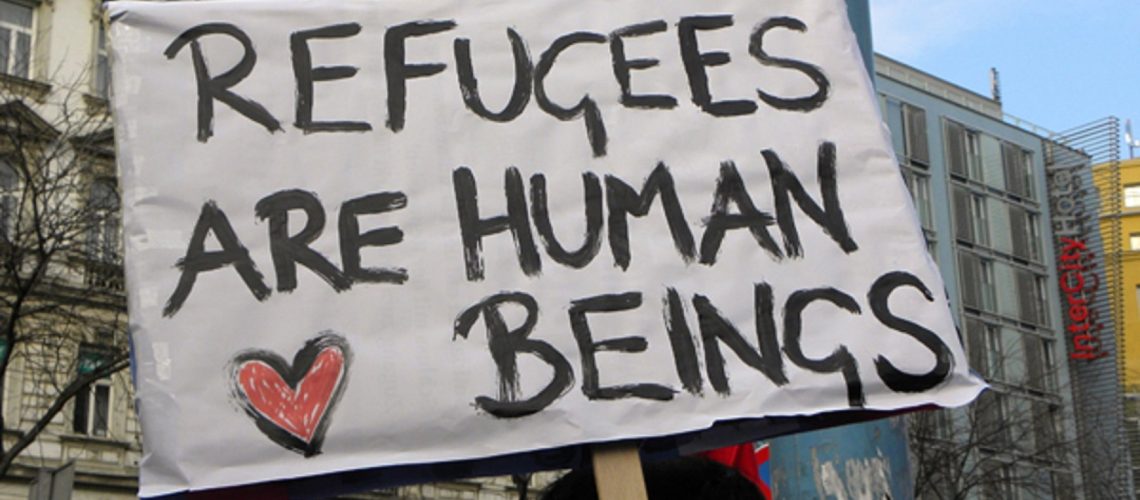Never before estimates for the number of refugees trying to arrive in Europe have been as mutable as today. Recent swifts in international policies, such as the closing of borders in many countries, might influence the number of incomings.
During the first quarter of 2015, 185 000 first time asylum seekers applied for protection in the European Union, up by 86% compared with the first quarter of 2014. In particular, the number of Kosovars rose considerably to reach almost 50 000. They represent the main citizenship of first time asylum applicants in the EU over the first quarter 2015, ahead of Syrians and Afghans.
During the second quarter of 2015, the number of persons seeking asylum from non-EU countries in the EU-28reached 213,200. We can expect more than 800,000 people arriving either via the Mediterranean or through land in 2015. In 2014 EU received 626,000 asylum seekers. Refugees are kept in Asylum centres, or refugee camps, while their application is being processed. Different countries process applications at a different pace.
Where do refugees come from?
According to the EU, in the first quarter of 2015, there were seven countries whose citizens obtained a “rate of recognition” —some form of protection in an EU country— over 50%. Syria, Eritrea and Iraq c.a. 90% and Afghanistan, Iran, Somalia and Sudan, all around 60%. This means that out of the 140 countries whose people have asked asylum in Europe in the last year, only a small part of them were thought to be persecuting their citizens. Even in that case, not every situations is considered as such.
How many of them are granted asylum?
In 2014, 160,000 first instance decisions were positive out of 357,000. 137.000 out of 197,000 rejected went to appeal or were reviewed. Only 18% (23,000) of final decisions were positive.
This means that eventually, 183,000 people were granted asylum in Europe in 2014. The remaining 174000 long procedures and eventually sent back to its country. Many of them will make a second try, or even more.
Article 14 of the Universal Declaration of Human Rights states that:
- Everyone has the right to seek and to enjoy in other countries asylum from persecution.
- This right may not be invoked in the case of prosecutions genuinely arising from non-political crimes or from acts contrary to the purposes and principles of the United Nations.
Some people asking asylum don’t risk persecution in their countries. Other reasons can force a man to leave everything he ever had, such as the impossibility of providing for its family. In most cases their applications are rejected and they are sent back to their home countries or become illegals in Europe.
Where do they end up, eventually?
In 2014, 9 countries accounted for more than 90% of the total of asylum seekers in EU, which was 626,000. This number includes all the people that requested asylum in 2014, therefore being way higher than the number of decisions taken. These countries are Germany (203 thousand), Sweden (81 thousand), Italy (65 thousand), France (64 thousand), Hungary (43 thousand), the United Kingdom (32 thousand), Austria (28 thousand), the Netherlands (25 thousand) and Belgium (23 thousand).
Refugees choose these countries for many reasons. These include historical ties between countries of origin and destination, a certain knowledge of the language used in the host country, the presence of established ethnic communities and the economic situation of the destination country.
Six Member States accounted for 81 % of the total number of positive decisions, or, in other words, the number of people that will be granted some form of protection for at least 5 years. Germany (48 thousand), followed by Sweden (33 thousand), France and Italy (both 21 thousand), the United Kingdom (14 thousand) and the Netherlands (13 thousand).
European Commission’s latest proposal was to relocate 160,000 asylum-seekers from Italy, Greece and Hungary to most other EU countries. Only citizenships with acceptance rates over 75% were taken into account. This shortens the list to the mere Syrian, Eritrean and Iraqis. According to the UNHCR’s figures, these three groups account for 62% of 2014 total arrivals via Mediterranean (approximately 30% of the total), with Syrians accounting for 122 thousand alone.
As of September 2015, Ireland is to accept around 5000 refugees for current year. Most of them will come from Syria, Eritrea and Iraq. This number could increase because of further family reunifications.
In years 2015/16, around 2 million people will seek asylum in the European Union. Half of them will come via the Mediterranean and half through Eastern Europe. If present day trends will be confirmed, around 1 million will obtain some form of protection.
Syrians are receiving by far the highest number of protection statuses in the EU, followed by Eritreans, Iraqis, Afghanis, Stateless and Somali. Despite the skyrocketing of applications from Kosovars, most of them are being rejected.
A most important detail needs to be underlined. Only selected nationalities receive a high rate of recognition. People fleeing from countries torn apart by civil war or ruled by a ruthless dictator have the right to be received and protected, and the European Union has a duty to do so.
Author: Fulvio Spagnul
Sources: http://ec.europa.eu/eurostat/statistics-explained/index.php/Asylum_statistics
http://ec.europa.eu/eurostat/statistics-explained/index.php/Asylum_quarterly_report
http://www.economist.com/blogs/economist-explains/2015/09/economist-explains-4
http://www.reuters.com/article/2015/09/09/us-europe-migrants-idUSKCN0R71EX20150909








